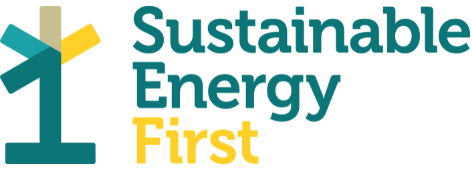The Energy Advice Hub is powered by Sustainable Energy First – the UK’s leading energy and carbon consultancy.
Two of the world’s most trusted greenhouse gas (GHG) accounting systems – the ISO 1406X series and the GHG Protocol – have announced a new partnership to align their frameworks.

For years, companies have had to translate between the two: corporate reporters typically follow the GHG Protocol, while auditors and verifiers work to ISO standards. The new collaboration promises to change that – and could make emissions reporting simpler, clearer and more consistent across the board.
Here, Philip Richards, Head of ESG at Sustainable Energy First, explains why this is a significant step for businesses and what to expect next.
Why this announcement is significant
This is the first time the two most widely used greenhouse gas accounting systems – the ISO 1406X series and the GHG Protocol – have committed to formally work together. Until now, businesses have often had to translate between the two frameworks because corporate reporters tend to use GHG Protocol while verifiers and auditors worked to ISO.
Having a single, harmonised set of rules should remove duplication and cut down on confusion. This also supports aligned assurance for companies reporting into other standards and frameworks, and offers a degree of futureproofing as regulatory requirements evolve.
What the standards cover
The ISO standards cover how organisations measure, verify, and report emissions at corporate, project and product levels. This includes:
- ISO 14064 (parts 1–3): organisational and project-level GHG accounting and verification
- ISO 14067: product carbon footprinting
- ISO 14068: carbon neutrality claims
The GHG Protocol, meanwhile, is the corporate accounting backbone most companies already follow. It sets out how to measure Scope 1, 2 and 3 emissions, with detailed guidance for value chains and product footprints.
Bringing these two frameworks together means businesses could soon work to a single, globally recognised methodology that covers all aspects of carbon measurement and reporting.
What this could mean for businesses
For UK companies specifically, the immediate benefit should be less administrative friction. Instead of preparing one emissions inventory for customers using the GHG Protocol and another for assurance providers working to ISO, organisations will be able to use one methodology across both.
That makes audits simpler and should also support compliance with SECR, CDP disclosures, and supplier, investor and insurer requests. It also gives greater certainty around what evidence auditors will expect to see and provides additional confidence in assurance. Similar benefits will apply internationally.
Potential challenges
The detail isn’t here yet – there’s no confirmed timetable for when the aligned standard will land, though 2028 seems a likely focus. That means companies will need to carry on as usual for now, but plan for retraining staff and updating data systems once the new guidance is published.
A further challenge will be how the harmonised rules fit with specific jurisdictional requirements – for example, the UK’s SECR regime or the EU’s CSRD rules – which may retain their own nuances. However, the expectation is that the ISSB will recognise the standardisation of approaches and guide future decisions accordingly.
Opportunities from consolidation
Having one set of globally accepted rules means businesses can design their systems once and report to multiple audiences – shareholders, lenders, regulators and customers – without reworking the numbers each time.
It should also help SMEs in supply chains, who often struggle with conflicting requests for product carbon footprints, by creating a more standardised and reliable approach.
Part of a broader trend
This move is part of a clear trend towards simplification and consolidation in sustainability reporting. Alongside the EU’s ongoing work to streamline the CSRD, CBAM and EU Taxonomy, the ISSB’s standardisation efforts, the SBTi’s v2 guidance, and the B Corp standards refresh, the direction of travel is consistent: fewer, simpler frameworks with stronger assurance.
What happens next
ISO and the GHG Protocol will now start co-developing co-branded standards. Drafts are expected to be released for consultation, including guidance on product carbon footprinting.
In the meantime, companies should:
- Map how current reporting aligns with both ISO and GHG Protocol frameworks.
- Keep an eye on consultation opportunities and contribute views – especially if your organisation relies heavily on market-based Scope 2 accounting or complex Scope 3 categories.
- Set aside budget and resource for updating methods and staff training once the new standards are published.
The Energy Advice Hub, powered by Sustainable Energy First, will continue to track developments and share updates as new information emerges.














